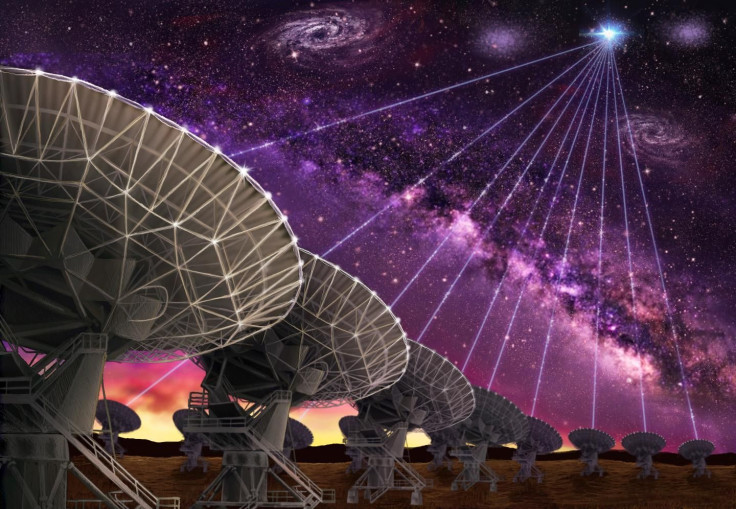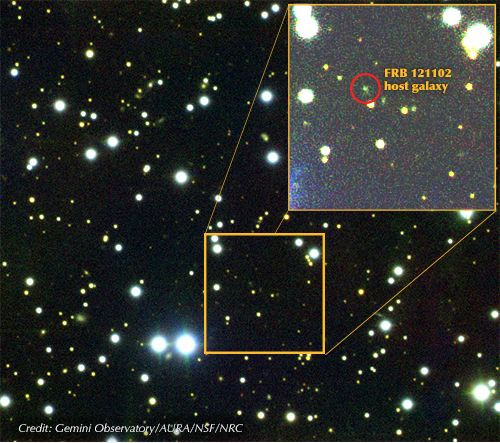Fast Radio Burst Traced To An 'Unassuming' Dwarf Galaxy Far, Far Away

For over a decade, Fast Radio Bursts (FRB) — intense bursts of radio emission lasting mere milliseconds — have continued to baffle scientists. The longstanding mystery of their origin, which is further compounded by the fact that less than two dozen such events have ever been detected, has spawned a plethora of scientific (and not so scientific) theories, including the occasional speculation that aliens are responsible for them.
For some reason, FRBs never seem to repeat, and, as a result, most theories about the origin of these mysterious pulses involve invoking cataclysmic incidents that destroy their source, for instance, a star exploding in a supernova, or a neutron star collapsing into a black hole.
This changed in 2012 when the first and only known repeating burst, named FRB 121102, was discovered by scientists at the Arecibo Observatory in Puerto Rico. Now, over four years and several recurring bursts of this FRB later, astronomers have finally been able to directly trace the mysterious burst to its point of origin — a dwarf galaxy 3 billion light-years from Earth.

"The host galaxy for this FRB appears to be a very humble and unassuming dwarf galaxy, which is less than 1 percent of the mass or our Milky Way galaxy," McGill University postdoctoral researcher Shriharsh Tendulkar, one of the astronomers who located the burst, said in a statement. "That’s surprising. One would generally expect most FRBs to come from large galaxies which have the largest numbers of stars and neutron stars — remnants of massive stars."
Given that FRBs flash for just a few milliseconds, pinpointing the source of these enigmatic bursts is easier said than done. In order to catch this particular FRB in the act, astronomers had to use the National Radio Astronomy Observatory's Karl G. Jansky Very Large Array, located near Socorro, New Mexico, which provided more than 80 hours of observation time.
"We really pushed hard to capture this terabyte-per-hour datastream reliably and set up a real-time platform for extracting these very faint fast bursts from that massive datastream," Casey Law, an astronomer at the University of California, Berkeley, who created the analysis software to search for rapid, one-off bursts, said in a statement.
So what cosmic event creates these bursts of radio waves that, in just a fraction of a second, generate more energy than 500 million suns?
The researchers are not quite sure, yet. Although it's almost certainly not aliens.
"This dwarf galaxy has fewer stars, but is forming stars at a high rate, which may suggest that FRBs are linked to young neutron stars," Tendulkar said. "There are also two other classes of extreme events — long duration gamma-ray bursts and superluminous supernovae — that frequently occur in dwarf galaxies, as well. This discovery may hint at links between FRBs and those two kinds of events."
The hypothesis most favored by the researchers involves an exotic type of neutron star with a massive magnetic field, called magnetar — although this raises at least as many questions as it answers, particularly because FRB 121102 is the only recurring one ever observed.
"The honest answer is that we don't know," Shami Chatterjee from Cornell University, one of the astronomers involved in the detection, told the National Geographic magazine.
The observations have been detailed in studies published in the Astrophysical Journal Letters and Nature.
© Copyright IBTimes 2024. All rights reserved.






















